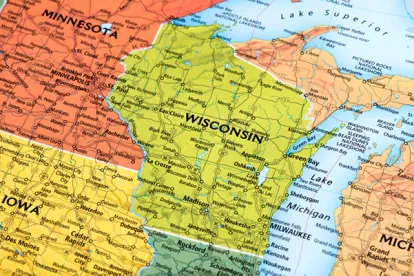A change to the statute of limitations for enforcing recorded easements, covenants and restrictions will take effect July 1
July 1, 2020, will be a momentous day for anyone involved in Wisconsin real estate. On that date, the 40-year statute of limitations for the enforcement of recorded easements set forth in Wis. Stat. Sec. 893.33(6) will finally take full effect. Property owners should be aware of the impending change and take steps now to avoid potential consequences.
BACKGROUND ON THE STATUTE
The coming change will result from the interplay of subsections (6) and (8) of Wis. Stat. Sec. 893.33, which was adopted in its present form in 1980. Section 893.33(6) is, when read by itself, fairly clear. It establishes a 40-year statute of limitations for any action to enforce a recorded easement or covenant restricting the use of real estate when the easement or covenant in question was originally recorded on or after July 1, 1980.
Prior to the adoption of the current version of Wis. Stat. Section 893.33, actions to enforce easements and covenants were subject to a 60-year statute of limitations. In 1980, Section 893.33(8) was adopted to establish a transitional rule for these older easements and covenants. Under Section 893.33(8), actions to enforce pre-1980 easements and covenants are subject to a statute of limitations equal to the shorter of the statute of limitations under the predecessor version of Section 893.33 which was in effect at their adoption (i.e. 60 years from the date of last recording)1, or 40 years from July 1, 1980.
The net effect of these past and present statutory provisions is that the statute of limitations has not yet run with respect to any action to enforce an easement or covenant recorded after July 1, 1960. That’s because for any easement recorded after July 1, 1960, “forty years after July 1, 1980” is the shorter time period under Section 893.33(8), and that period runs until July 1, 2020. Only easements and covenants last recorded more than 60 years ago are currently subject to being barred by the statute of limitations, since for those easements and covenants, the shorter period under Section 893.33(8) is 60 years from the date of recording. This is part of the reason why title insurance companies perform 60-year searches in connection with their commitments for insurance policies. Any easement or covenant recorded during that 60-year period remains enforceable.
WHAT THE CHANGE MEANS FOR PROPERTY OWNERS
This all changes on July 1, 2020. On that date, the transition to the 40-year statute of limitations will be complete, as “forty years from July 1, 1980” becomes the applicable limitation period for all pre-1980 easements and covenants. On that date, any action to enforce an easement or covenant last recorded prior to July 1, 1980 may be barred.
Consider the following examples:
-
Easement one was recorded June 15, 1960. The applicable limitation period is the shorter of 60 years from the date of last recording, or 40 years from July 1, 1980. The shorter of those periods ends on June 15, 2020, so any action to enforce easement one may be barred as of that date.
-
Easement two was recorded March 1, 1970. The applicable limitation period is the same as above, but the first date to occur in that case is 40 years from July 1, 1980, or July 1, 2020. Easement two is 10 years more recent than easement one, but enforcement of it can be barred less than one month later than the bar date for easement one.
-
Easement three was recorded March 1, 1981. The applicable limitation period is 40 years, as it is for every easement or covenant recorded on or after July 1, 1980.
Effectively, actions to enforce all easements and covenants during the 20-year period between July 1, 1960 and July 1, 1980 will become subject to bar on July 1, 2020, and that bar date will begin moving forward daily.
It is important to remember that this statute of limitations can be reset upon either the re-recording of the easement or covenant, or the recording of another document which expressly refers to the earlier document. If, for example, a warranty deed to the property encumbered by the three easements described above was recorded in 2000, and instead of a general exception for “easements of record,” the deed specifically listed the easements one, two and three as exceptions to seller’s warranty of title, then actions to enforce those three easements could not be barred until 2040.
In practice, easements and covenants which are still in use or effect, but which have gone unmentioned in any document file with the applicable Register of Deeds for 40 years, may be rare. Nevertheless, property owners would be well-served to review their own records prior to July 1, 2020, in order to confirm the original recording date of each of the easements and covenants benefiting and burdening their properties, as well as the most recent date upon which each such easement and covenant was last expressly referenced in another recorded document. If the last recorded reference to any easement or covenant benefiting a property is approaching 40 years old, a notice expressing the owner’s rights should be recorded in order to reset the 40-year statute of limitations.
OTHER LIMITATIONS MAY APPLY
Wis. Stat. Sec. 893.33(6) is not the only limitation applicable to easements, covenants and restrictions. Prescriptive easements, for example, are governed by separate statutes of limitations found in Wis. Stat. Sec. 893.28. Another potential limitation can be found in Wis. Stat. Sec. 706.09, which provides that in certain instances, a purchaser who had no notice of the existence of a “prior adverse claim” (which Wisconsin courts have interpreted to include an easement), can raise such lack of notice as an affirmative defense to an action to enforce the adverse claim. That exception is very narrow, however, as the purchaser has to prove both that it had no actual or constructive notice of the adverse claim, and that the last recorded reference to the adverse claim was more than 30 years prior to the purchaser’s acquisition of the property.
1 The predecessor statute was Section 893.15, 1977 Stats.



 />i
/>i

